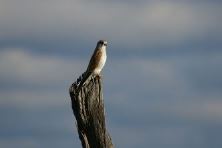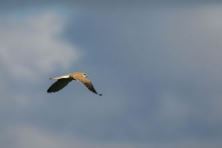
Shoppers Feedback:
Jan 17, 2017
Hello Ros,
I have now paid the invoice, but I would like to write to you just to say a big THANK YOU for getting me the Penguin!
The ChatterMate Penguin became a nice memory for me when I was in New Zealand, and I am so greatful to you for arranging so that I could have it! :-)
Thank you so much!!!!!!!!!!!
Regards,
Malin
Hi Ros,
Many thanks for your very kind email. I really appreciate your prompt reply!
I appreciate your advice regarding the decorations and customs. These are a gift for my daughter’s exchange student family so when she returns home on the weekend I will show her and see if she loves them as much as I do!
Thanks so very much again - I am truly grateful for your kind assistance.
Kind Regards
Bernadette
Ros,
Thanks again for the great customer service. It's a refreshing change!
Best regards,
Trevor
Hey Roz,
Thank you for your emails. Just loved my first order. The cute little Aussie bush critters are going to be used for an office Christmas decoration. My colleagues also liked them and talked about making an order to your site. I'll send you a photo when completed.
I'll be ordering more to send to my daughter's host family in America.
Fabulous service from you.
Kind regards,
Michelle
Thankyou. Order arrived today. One very happy grandson with his new beastly binoculars.
Regards,
Irene
- Home
- Wild Wonders
- Shop
- Aromas of Australia
- Australian Made
- Books
- Book Marks
- Christmas Decoration Sale
- Christmas Decorations
- Clocks
- Drink Holders
- Garden & Outdoor
- Gift Wrapping & Cards
- Home & Giftware
- Jewellery
- Keyrings
- New Products
- Pencils & Pen Holders
- Photo Frames
- Plush Toys
- Plush with Sound
- Sheepskin Rugs
- Stationery
- Stone Carvings
- Toys & Games
- Travel Goods
- Wedding
- Wild Figurines
- Wildlife Safety Products
- Wind Chimes
- Wine Charms
- View All Products
- Wildlife
- Australiana
- Explore
- Contact Us
Nankeen Kestrel

Quick Facts
| Length: | 34 cm |
| Height: | - |
| Weight: | 172 grams |
| Colour: | Brown back, White underside and Black tipped tail |
| Habitat: | Prefers temperate grasslands and open woodlands |
| Food: | Insects, Small Birds, Reptiles and Mice |
| Predators: | - |
| Status: | Secure |
The Nankeen Kestrel is a slender falcon and is a relatively small bird of prey (raptor). The upper parts are mostly rufous, with some dark streaking. The wings are tipped with black. The underparts are pale buff, streaked with black, and the under tail is finely barred with black, with a broader black band towards the tip. Females tend to be more heavily marked and have more rufous on the crown and tail. Males have a greyish crown and tail, although the extent varies between individuals. Females are larger than males. Young Nankeen Kestrels closely resemble the adult female, with heavier markings.
Nankeen Kestrels are found in most areas of Australia and are also found on islands along Australia's coastline.
Preferred habitats are lightly wooded areas and open agricultural regions. The Nankeen Kestrel's success as a bird of prey can be largely contributed to its tolerance for a wide variety of habitats and its ability to feed on a variety of foods and nest in a range of sites.
Some Nankeen Kestrels are partially migratory, others disperse in response to the availability of food and some are largely resident.
The Nankeen Kestrel's diet is varied. It mainly feeds on small mammals, reptiles, small birds and a variety of insects. Prey is located from a perch or by hovering a short distance above the ground on rapid wing-beats, using its fan-shaped tail as a rudder and keeping the head and body kept still. Once prey is spotted, the bird drops nearer to the ground until it is close enough to pounce. Some insects and birds may be caught in mid-air or snatched from tree branches.
The Nankeen Kestrel nests in a wide variety of sites, including tree hollows, caves, ledges on the outside of buildings and occasionally on the ground. The nest consists of anything from a simple scrape in the dirt of a ledge or tree hollow, to a nest of sticks or mud that has been abandoned by another species of bird. Pairs of Nankeen Kestrels usually stay together over successive breeding seasons and will often use the same nest site or territory year after year. Usually only one brood of young is raised in a year. The female does the bulk of the incubation while the male supplies the food.
Last Updated: Sunday 16th February, 2014
BirdLife Australia - www.birdlife.org.au
BUSH e-TELEGRAPH
Signup for our monthly newsletter the "e-Telegraph"
Quick Links
Home | The Beginning | About The Land Down Under | Wild Wonders | Advertise on Wild Wonders | Christmas Decoration Sale | Christmas Tree Decorations | Drink Holders | Plush with Sound | Stone Carvings | Wildlife Wine Charms | Freebies | Australian Wildlife | Help Our Wildlife | Australiana | Photo of the Month | Explore The Land Down Under | Contact Us | Legal Notices



